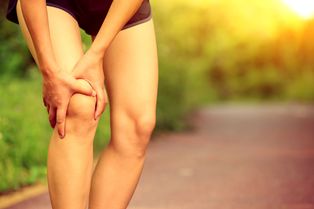
Individuals, who engage in exercise on a regular basis most especially runners, are at higher risk of experiencing pain in the outer part of the knee. When this happens, the cause of this could be the iliotibial band syndrome. Recurrent bending of the knee during physical activities for example running, cycling, swimming, and climbing leads to Iliotibial (IT) band syndrome.
The IT band is known as a group of fibers which pass through the length of the upper leg, from the hip to the top of the shin. When it is used excessively, the IT band becomes tightened. The tightening can make the band rub against the outer part of the knee. This rubbing can result in pain and swelling. The IT band syndrome may start as a mild pain and increase if it is not treated.
What are the Causes of IT Band Syndrome?
A lot of people feel IT band pain at one point or another in their lifetime. This is a common injury, which is common among young athletes. Generally, these people make simple training mistakes which can be subjected to correction.
1. Lack of strength or flexibility. If the muscles inside the thigh, which is known as the "hip adductors", weaken, this can make the IT band become tight. Similarly, tightening of the IT band can also occur if the hamstrings or other thigh muscles are too tight.
2. Avoiding warm-up exercises. Although it is tempting to jump into training, this is because muscle and soft tissue will benefit from 5 to 10 minutes of warm-up exercise before becoming more active.
3. Train too fast. Care must be taking to avoid ambitious training schedule as it is not always good for joints. In order to avoid IT band syndrome and other injuries, athletes are encouraged to slowly increase the duration and intensity of work for several weeks or months.
4. Putting on ill-fitting shoes. The way the foot land on the ground can affect not only the joints of the feet and ankles but also the knees, hip and muscles and other soft tissues that support the joints. Wearing shoes in a normal way can improve biomechanics and reduce or prevent IT band pain.
5. Running on rough surfaces. It has been shown that running on surfaces or terrain that is too hard, hilly, uneven or banked put runners at higher risk of IT friction.
Symptoms of IT Band Syndrome
Iliotibial band syndrome can cause knee pain during or after exercise. Symptoms of IT band syndrome may vary slightly from person to person and from the way they appear.
Some symptoms include:
• Pain during running or other activities which involves the outside of the knee.
• There will be a clicking sensation at the point where the band rubs against your knees.
• Persistent pain after exercise.
• The knee is soft to the touch.
• Tenderness in the buttocks.
• Redness and warmth around the knees, especially the outer part.
Symptoms usually begin shortly after the onset of physical activity. The most common symptom of an IT band syndrome is the pain on the outside of the knee which worsens if the person continues the pain-causing activity. When a person continues to work or participate in a similar activity, the IT band will continue to rub against the outside of the knee, resulting in swelling and severe pain.
IT Band Syndrome Treatment
Treatment for IT Band Syndrome requires restoring the circulation and blood flow to the affected structures in your knee. Pain is caused when swelling, inflammation and decreased circulation generate a blockage, which causes blood flow to be interrupted or slowed. Treatment for this issue requires breaking up the accumulated fluids in your knee to allow for improved healing and quicker recovery.
Products recommended for symptoms of swelling, redness, pain, and inflammation, and if coolness makes your pain feel better:
Ice Substitute Poultice
Bruise Relief Liniment
Muscle Therapy Massage Oil
Products recommended when swelling and inflammation are gone, but you still feel pain, stiffness, weakness, and/or sensitivity in cold and damp weather, and if heat makes your pain feel better:
Pain Relief Liniment
Tendon and Ligament Poultice
Muscle Therapy Massage Oil





